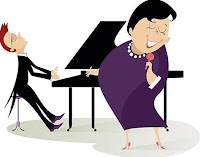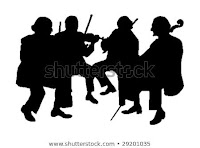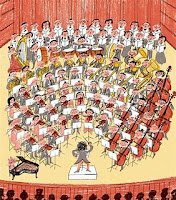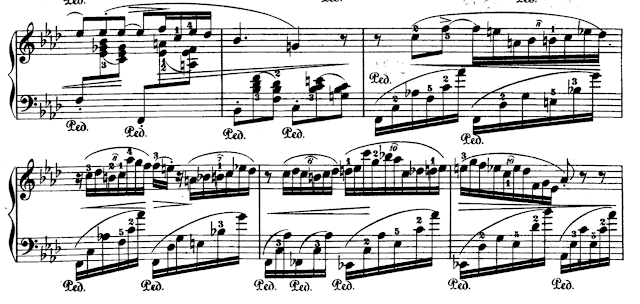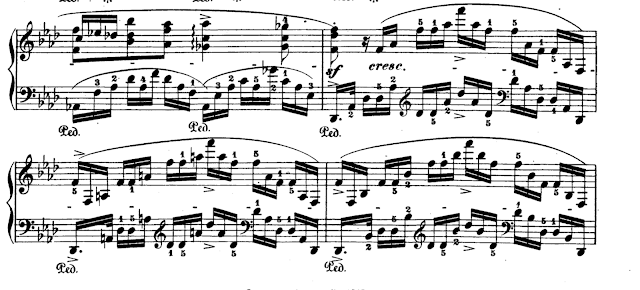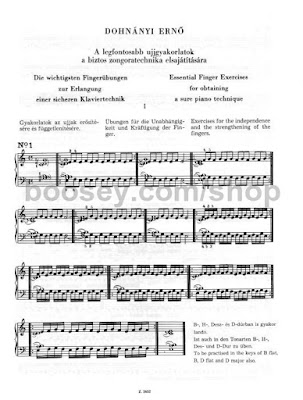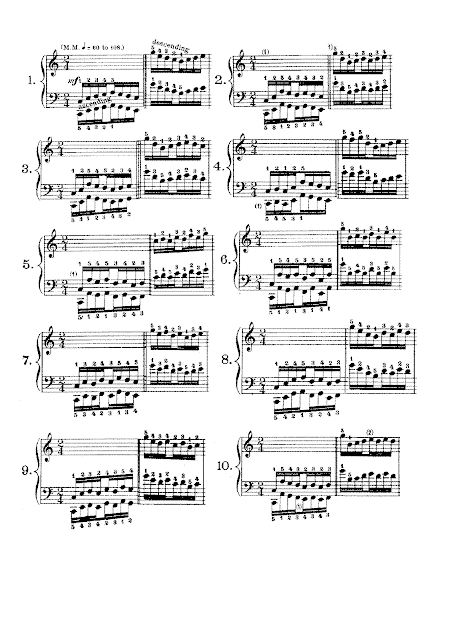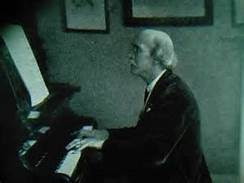The Technique
In these pages we consider the techniques, the how-tos, of coordinating more than one musical line. We learn to apply principles of grouping notes together and shaping lines in certain ways for technical ease. We consider possible fingerings,
sometimes more than one, depending on the desired effect. Often, technical solutions coincide with musical objectives. This makes us happy. But when there is a technical problem, we examine it on its own merits. No mindless rote here.
Often in the text I refer to rotation. This is shorthand for forearm rotation, of which there are two types, single and double. The terminology is not important. Suffice it to say that single rotation is the sort applied
when changing direction with each note, as in a trill or an Alberti figure. Double rotation occurs when the finger moves both to and from notes that move in the same direction, as in a scale.
When the hands work together rotationally there are four applications: parallel left, parallel right, opposite inward and opposite outward. Parallel right means that the two hands both open to the right, then rotate back leftward into the note. Parallel left is the reverse. Opposite inward means that the hands both open with their backs toward each other. Opposite outward is the reverse, the palms are facing each other. I know it sounds confusing, but the applications are quite simple. Not only that, these are natural movements that the body will accept without complaint.
Occasionally a technical solution will require what I call a
walking hand or walking arm. This is nothing more than a combination of rotation with a lateral movement and slight opening of the hand. Remember, the hand can be open without feeling stretched to an extreme.
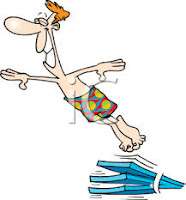 Sometimes I use the word pluck to indicate a springing action away from a note. This is akin to what happens when bending the knees to create thrust from a diving board. I don’t necessarily mean that the note is staccato. This movement is always tiny and propels the hand laterally, not vertically. In a leap, this plucking action achieves the distance to the point over the desired landing spot. Gravity and rotation then help create the note.
Sometimes I use the word pluck to indicate a springing action away from a note. This is akin to what happens when bending the knees to create thrust from a diving board. I don’t necessarily mean that the note is staccato. This movement is always tiny and propels the hand laterally, not vertically. In a leap, this plucking action achieves the distance to the point over the desired landing spot. Gravity and rotation then help create the note.
If a passage of counterpoint feels uncoordinated, it is very
likely that one hand is trying to do what the other is doing. The best way to solve these issues is to first examine the type of forearm rotation required in each hand separately. Then, feel them together. The hands can be a little stupid sometimes. They need to be shown what the mind knows.
(For a video demonstration of the aforementioned, click on the iDemos tab at the top of the page and select Inventions and Sinfonias.)
To be continued:
In these pages we consider the techniques, the how-tos, of coordinating more than one musical line. We learn to apply principles of grouping notes together and shaping lines in certain ways for technical ease. We consider possible fingerings,
sometimes more than one, depending on the desired effect. Often, technical solutions coincide with musical objectives. This makes us happy. But when there is a technical problem, we examine it on its own merits. No mindless rote here.
Often in the text I refer to rotation. This is shorthand for forearm rotation, of which there are two types, single and double. The terminology is not important. Suffice it to say that single rotation is the sort applied
when changing direction with each note, as in a trill or an Alberti figure. Double rotation occurs when the finger moves both to and from notes that move in the same direction, as in a scale.
When the hands work together rotationally there are four applications: parallel left, parallel right, opposite inward and opposite outward. Parallel right means that the two hands both open to the right, then rotate back leftward into the note. Parallel left is the reverse. Opposite inward means that the hands both open with their backs toward each other. Opposite outward is the reverse, the palms are facing each other. I know it sounds confusing, but the applications are quite simple. Not only that, these are natural movements that the body will accept without complaint.
Occasionally a technical solution will require what I call a
walking hand or walking arm. This is nothing more than a combination of rotation with a lateral movement and slight opening of the hand. Remember, the hand can be open without feeling stretched to an extreme.
 Sometimes I use the word pluck to indicate a springing action away from a note. This is akin to what happens when bending the knees to create thrust from a diving board. I don’t necessarily mean that the note is staccato. This movement is always tiny and propels the hand laterally, not vertically. In a leap, this plucking action achieves the distance to the point over the desired landing spot. Gravity and rotation then help create the note.
Sometimes I use the word pluck to indicate a springing action away from a note. This is akin to what happens when bending the knees to create thrust from a diving board. I don’t necessarily mean that the note is staccato. This movement is always tiny and propels the hand laterally, not vertically. In a leap, this plucking action achieves the distance to the point over the desired landing spot. Gravity and rotation then help create the note.If a passage of counterpoint feels uncoordinated, it is very
likely that one hand is trying to do what the other is doing. The best way to solve these issues is to first examine the type of forearm rotation required in each hand separately. Then, feel them together. The hands can be a little stupid sometimes. They need to be shown what the mind knows.
(For a video demonstration of the aforementioned, click on the iDemos tab at the top of the page and select Inventions and Sinfonias.)
To be continued:




